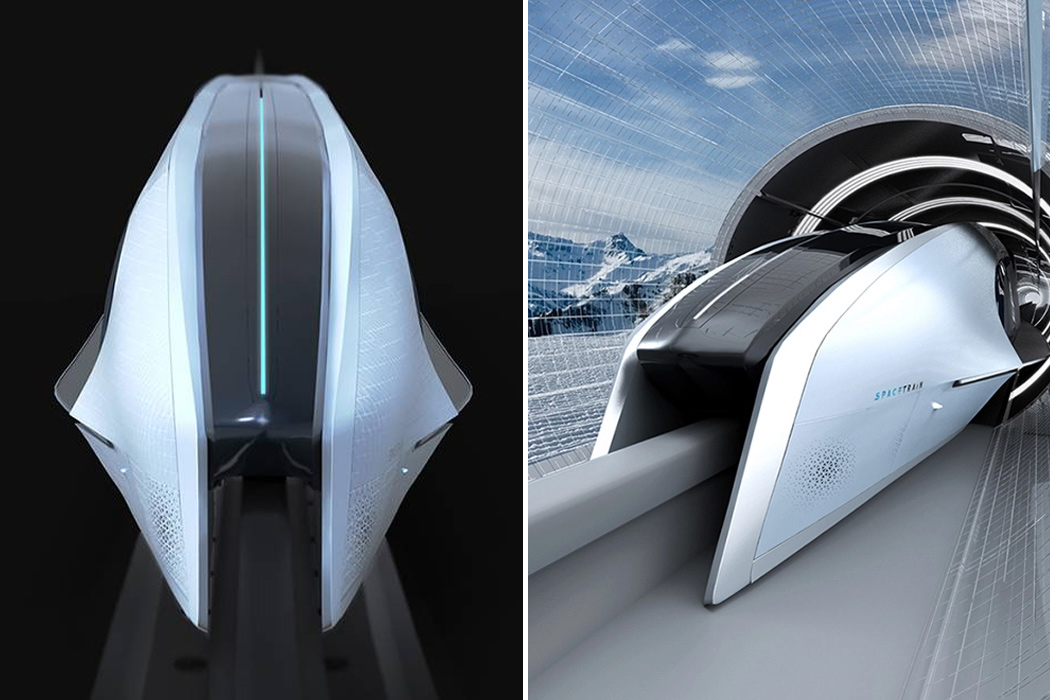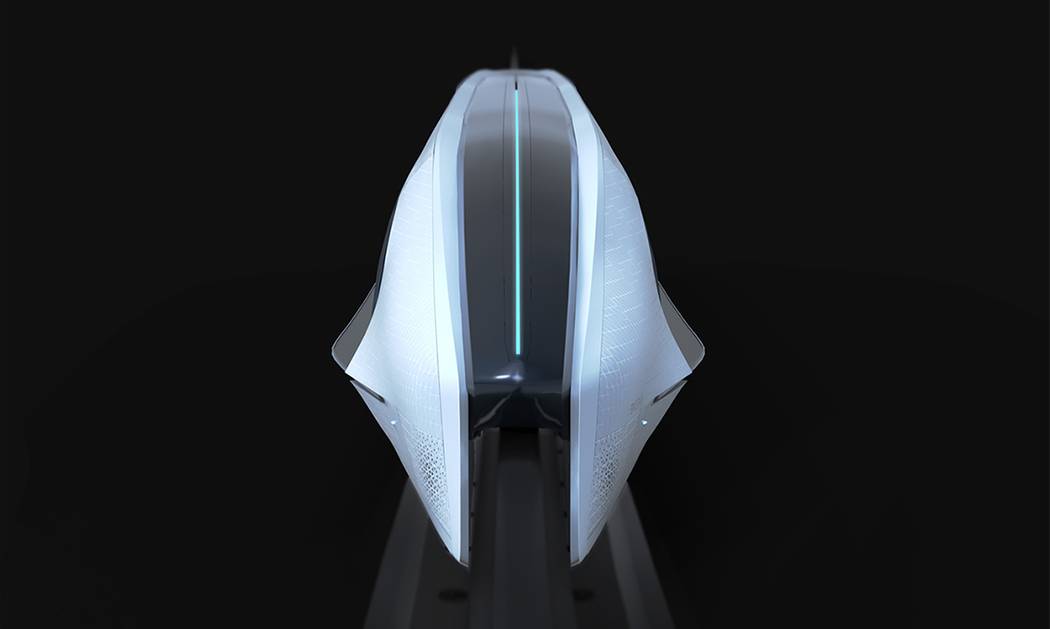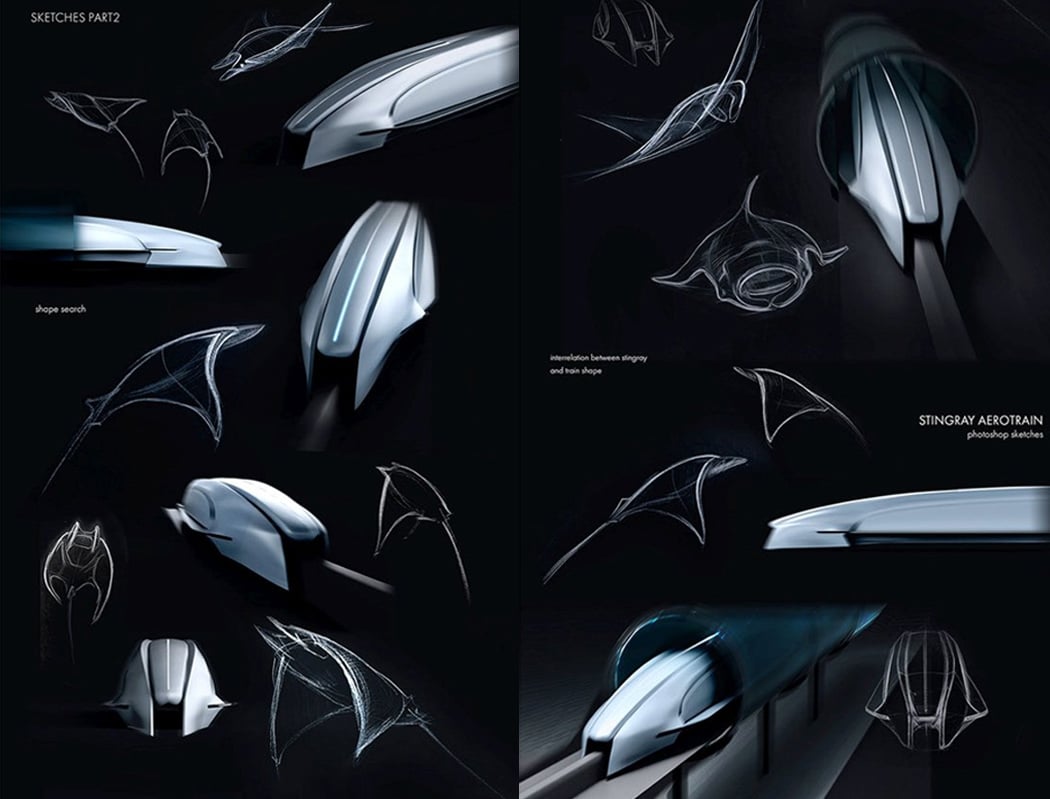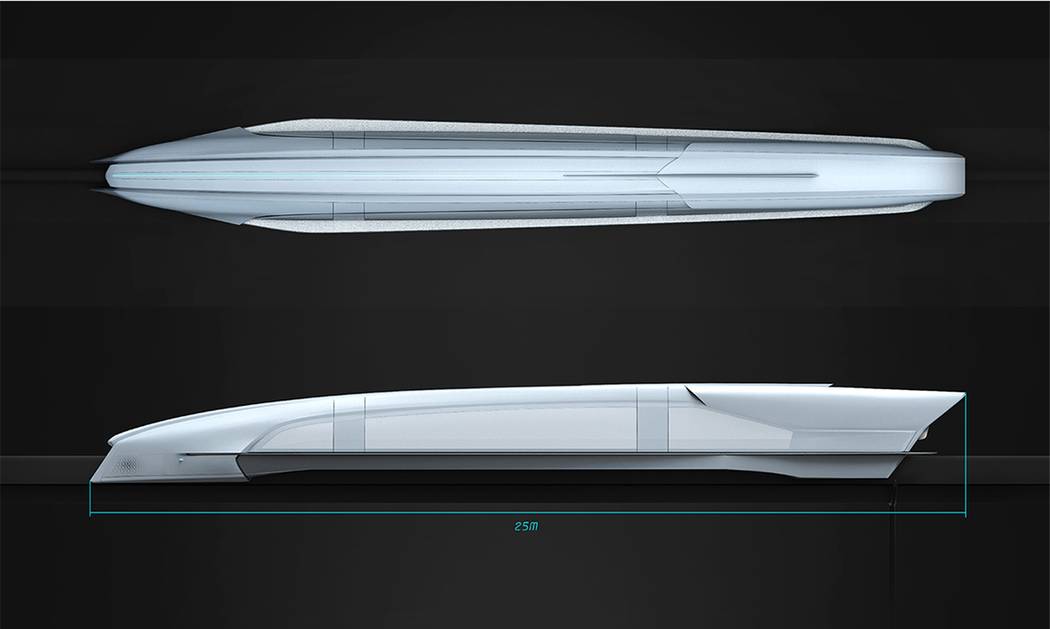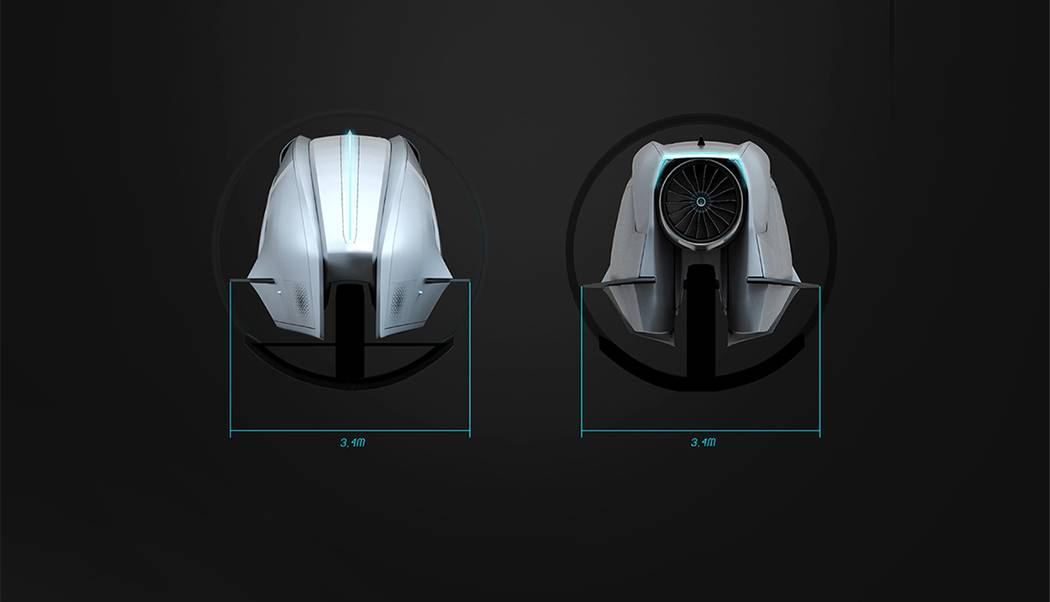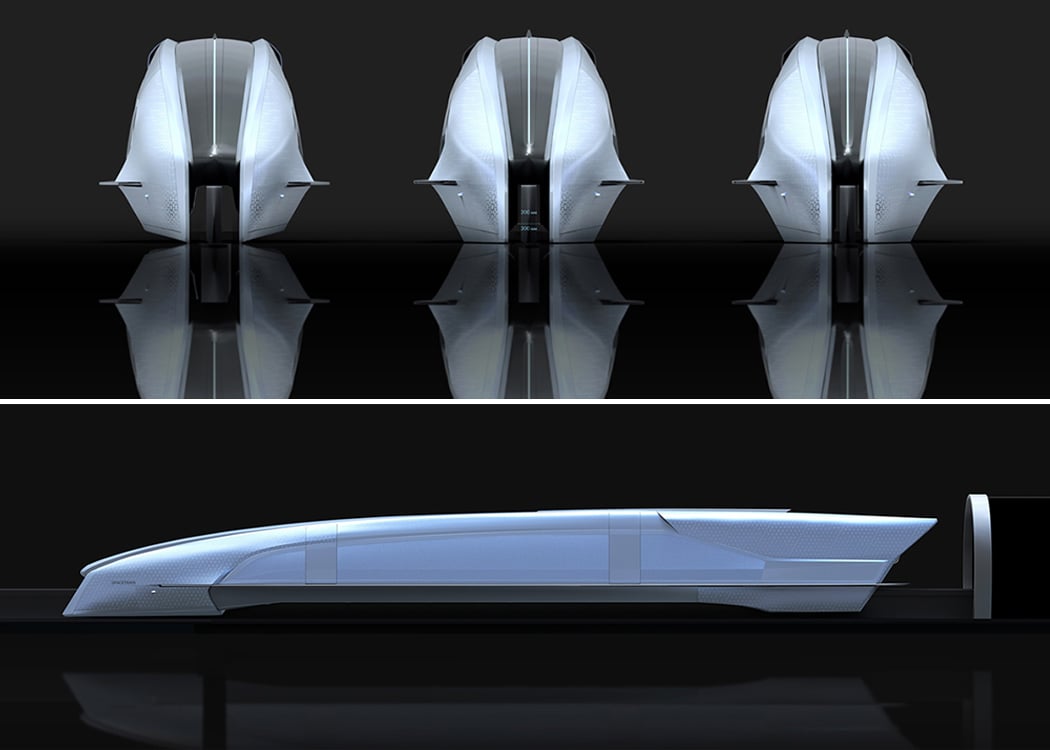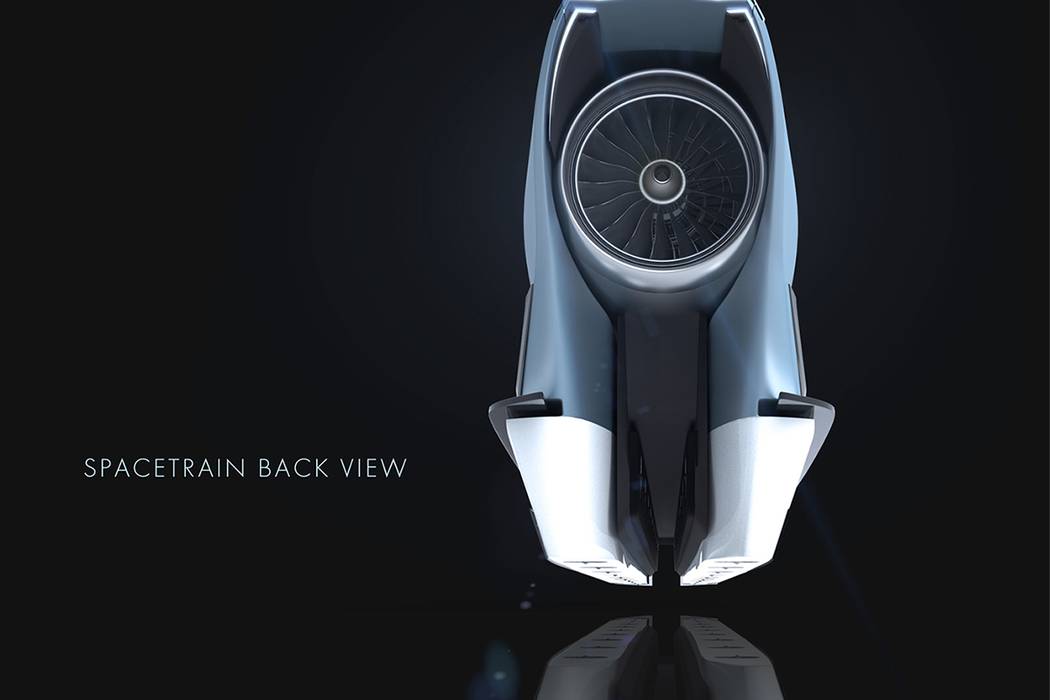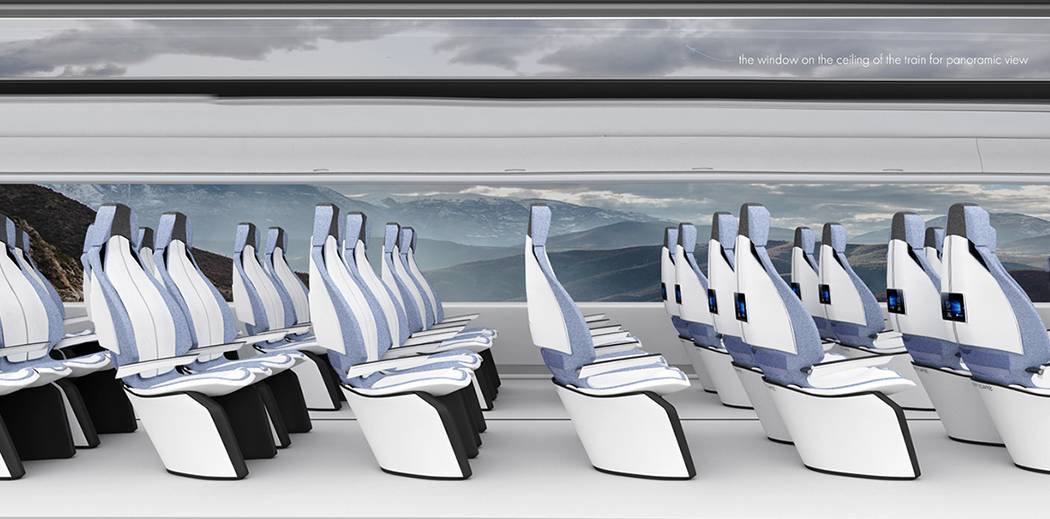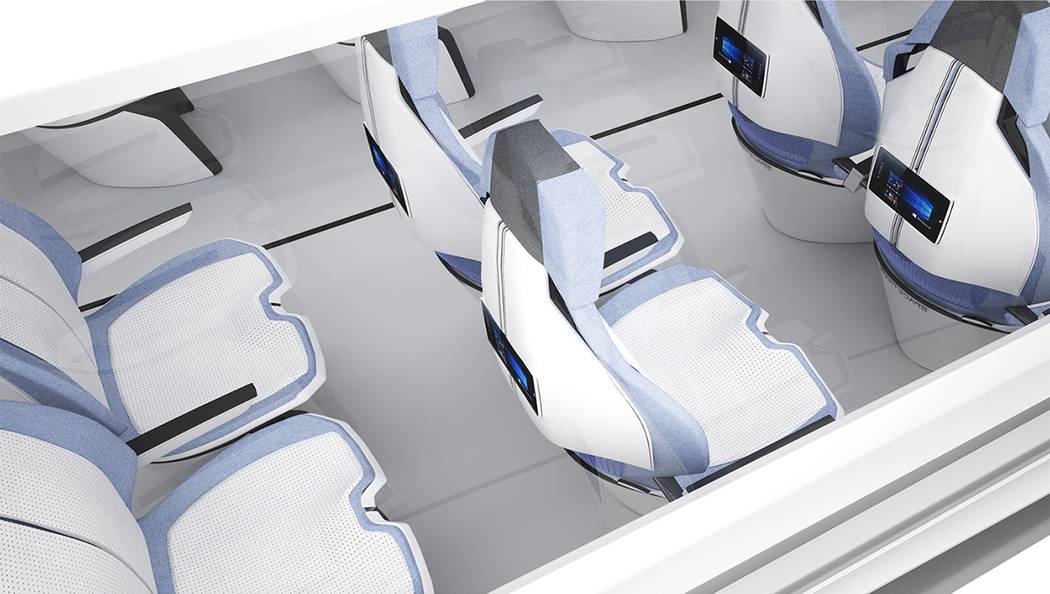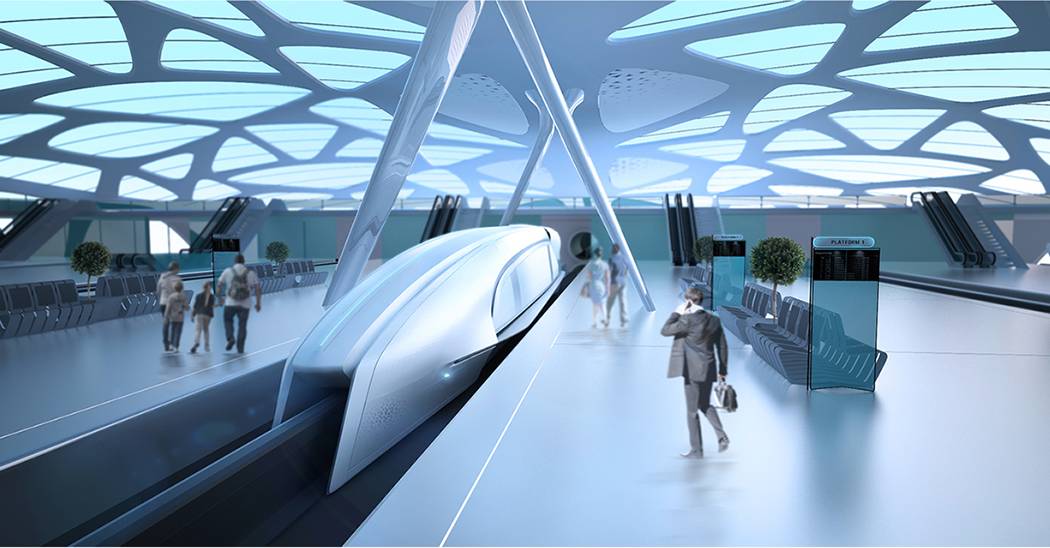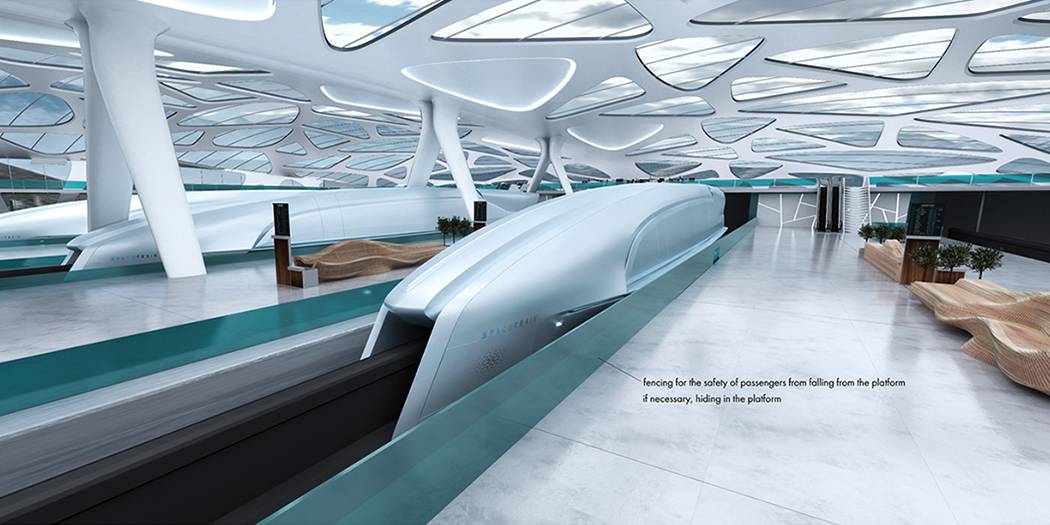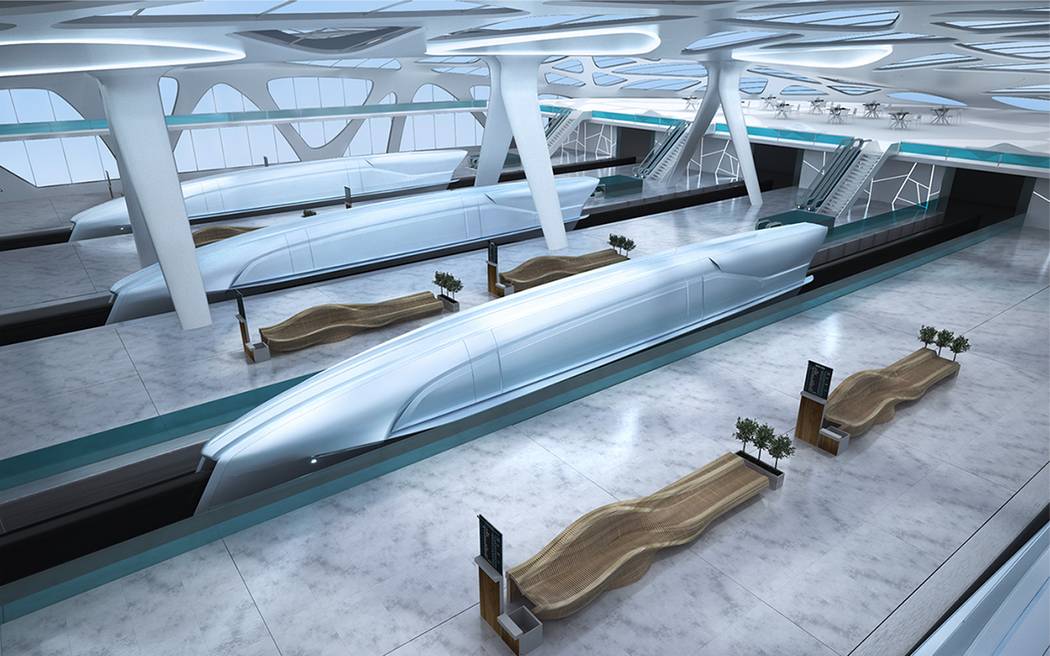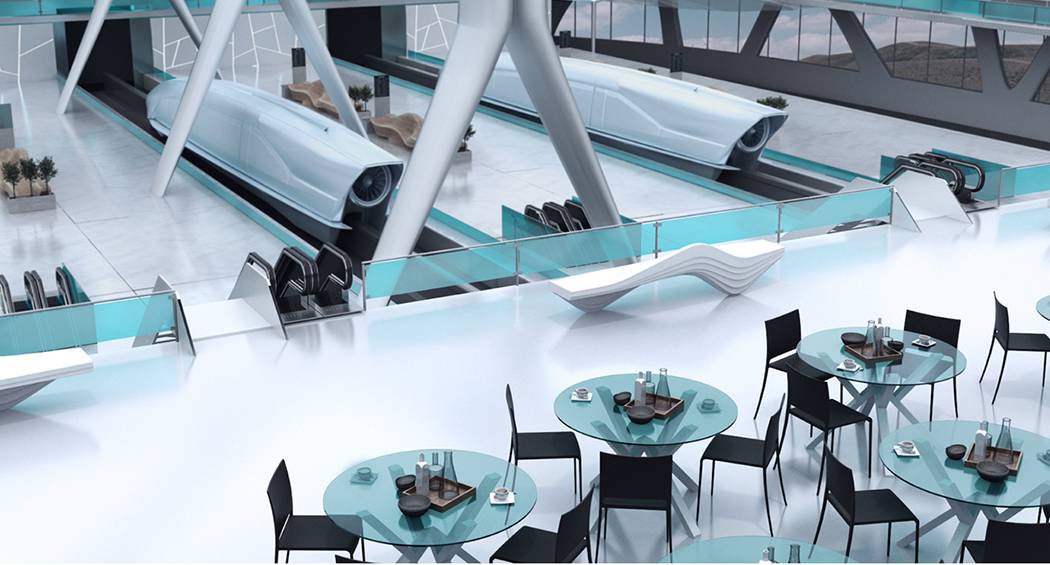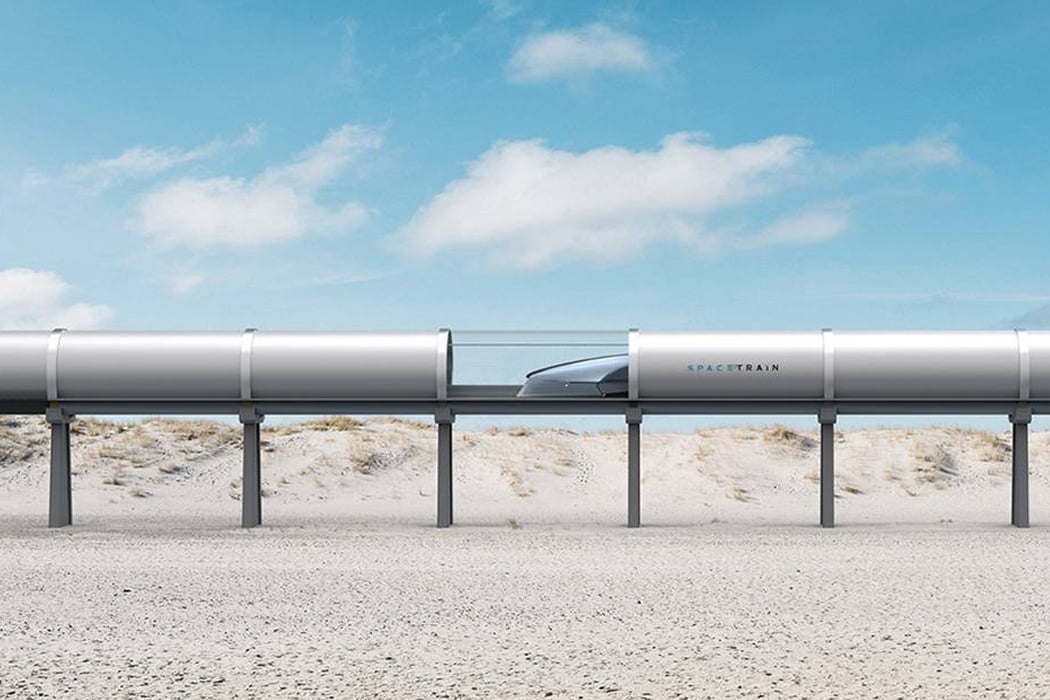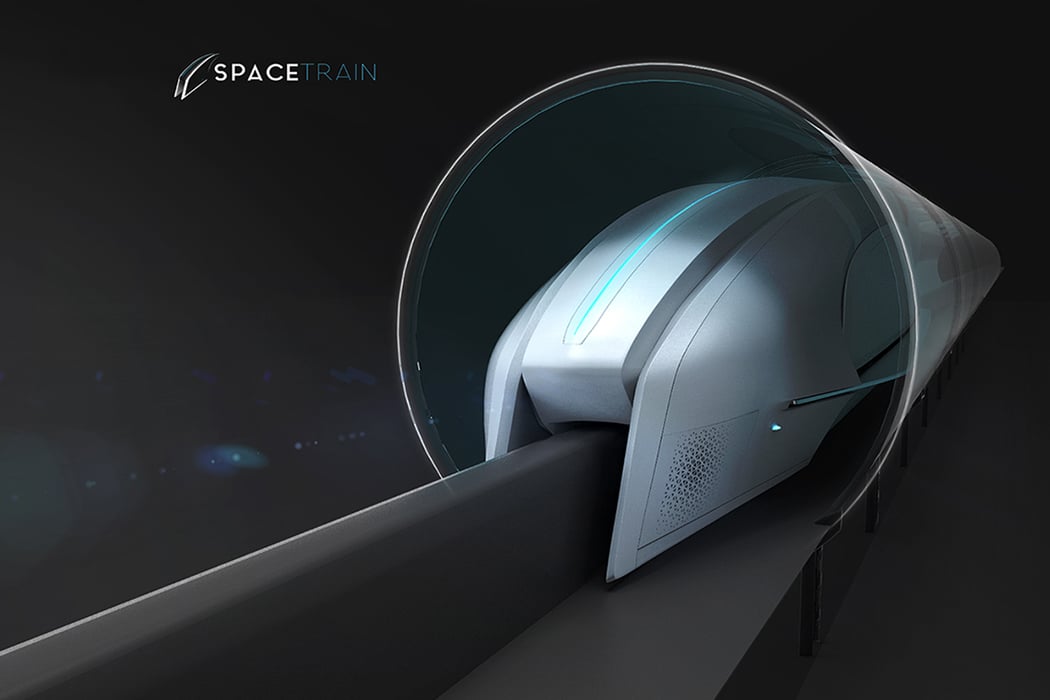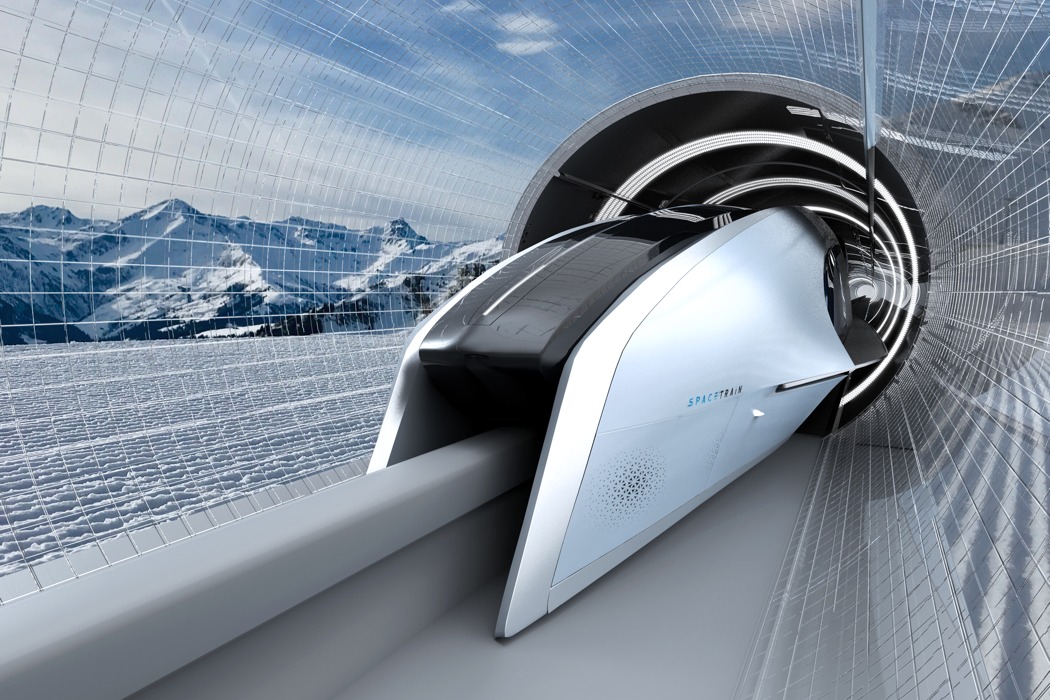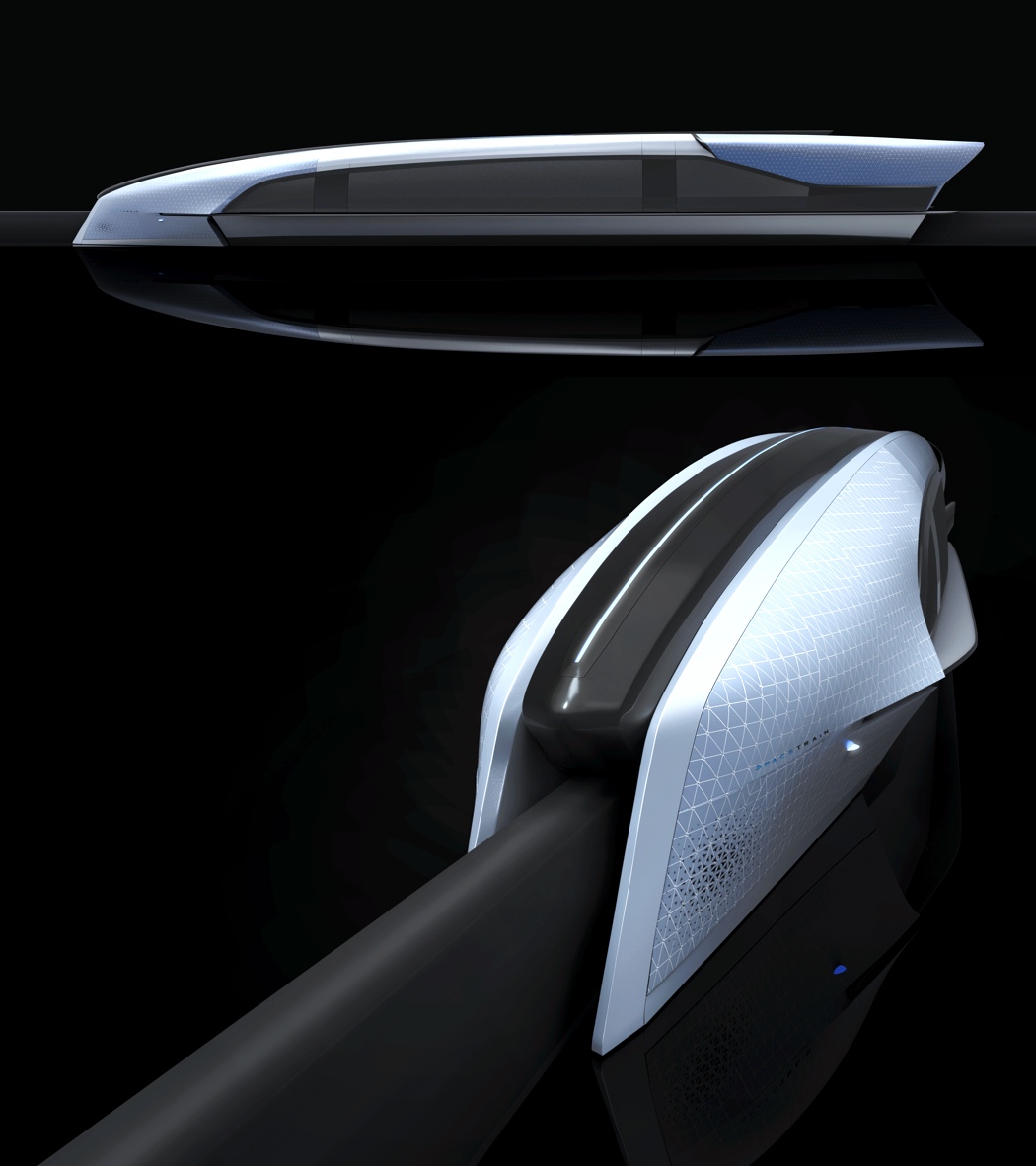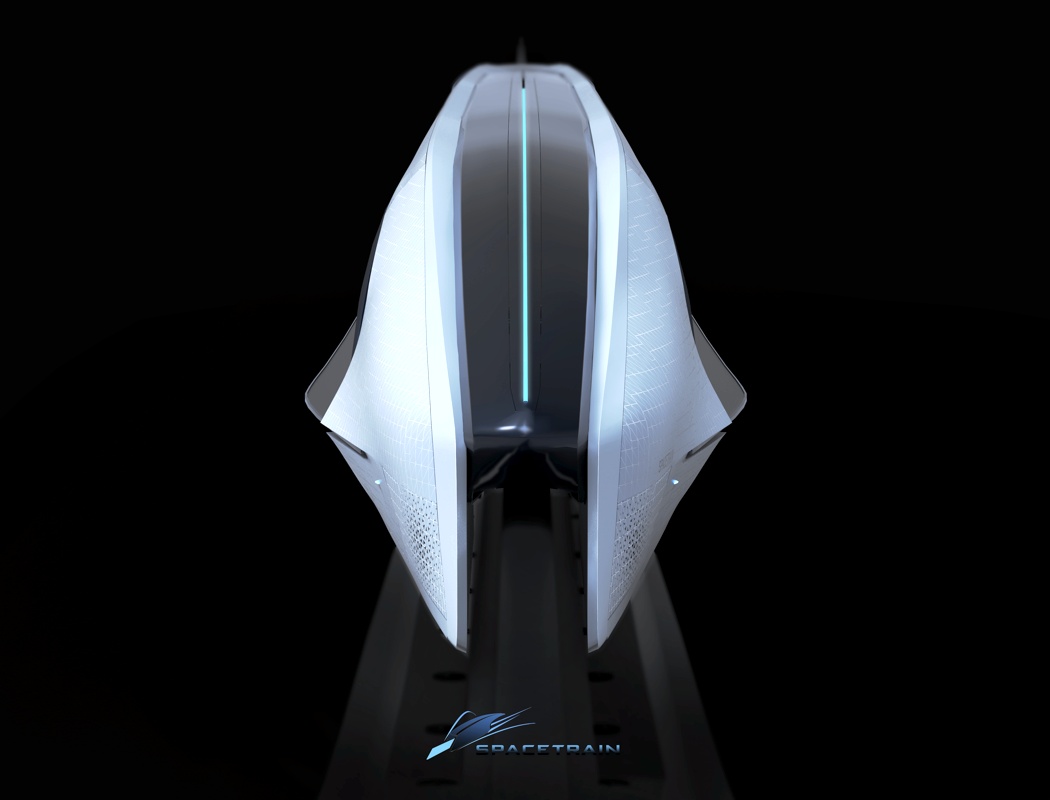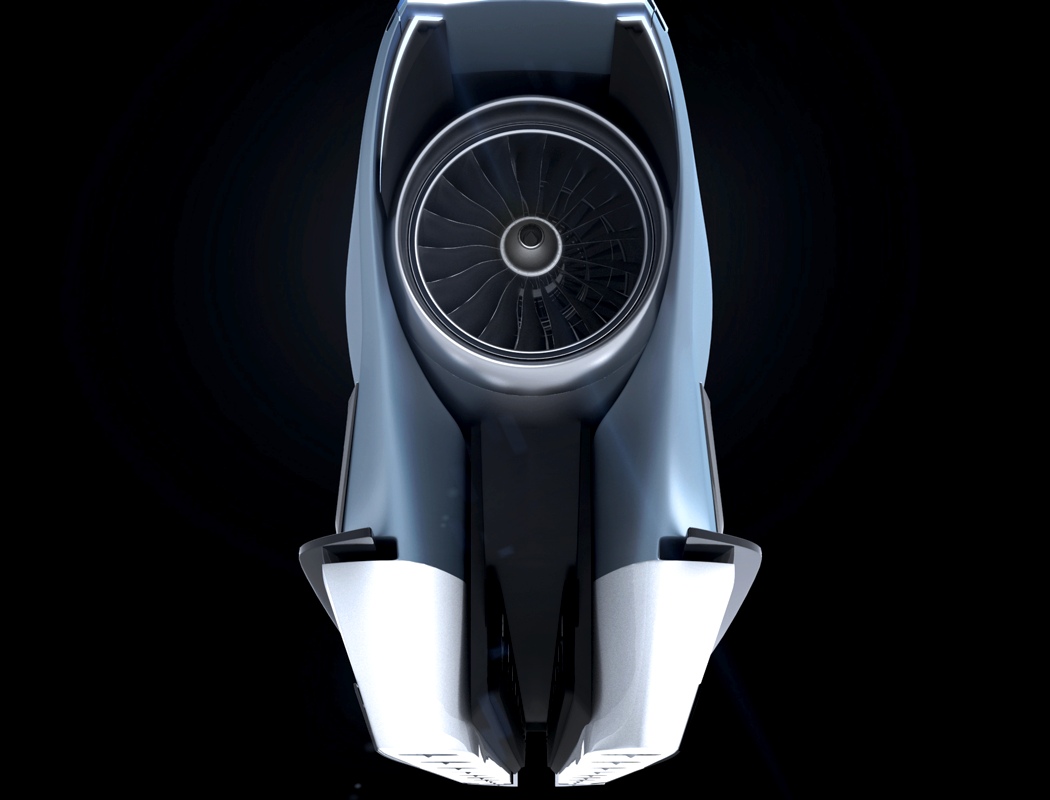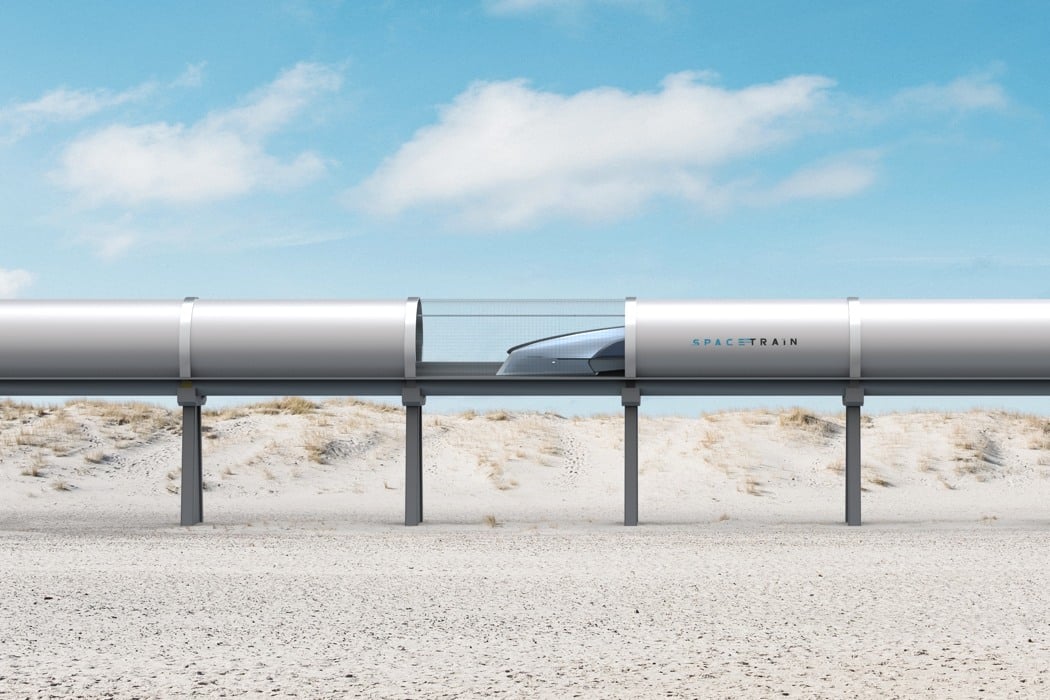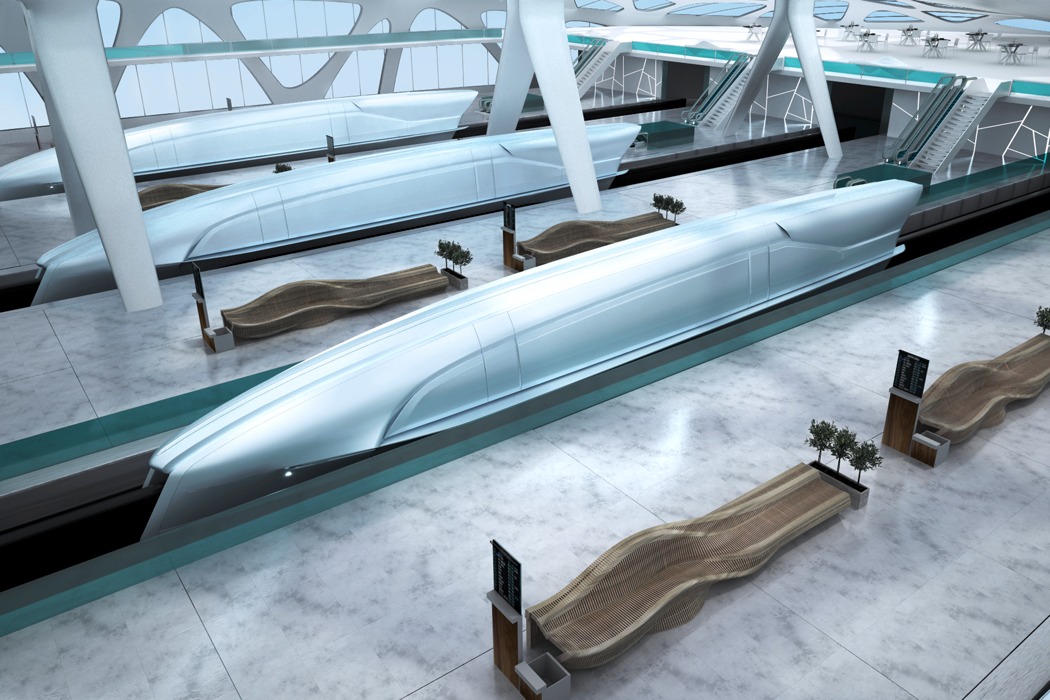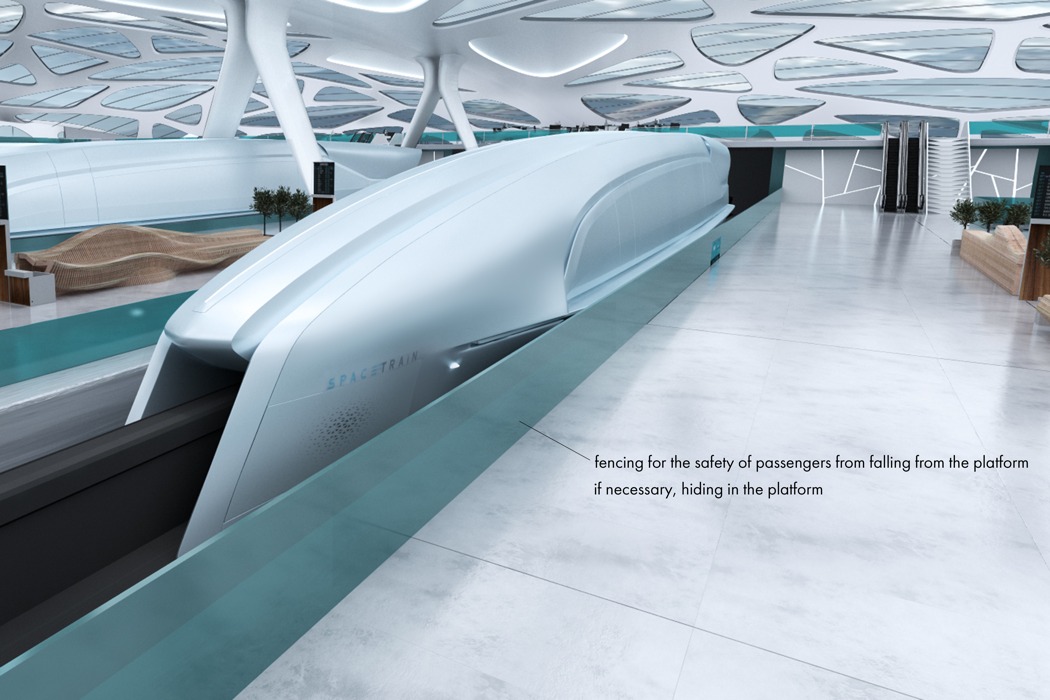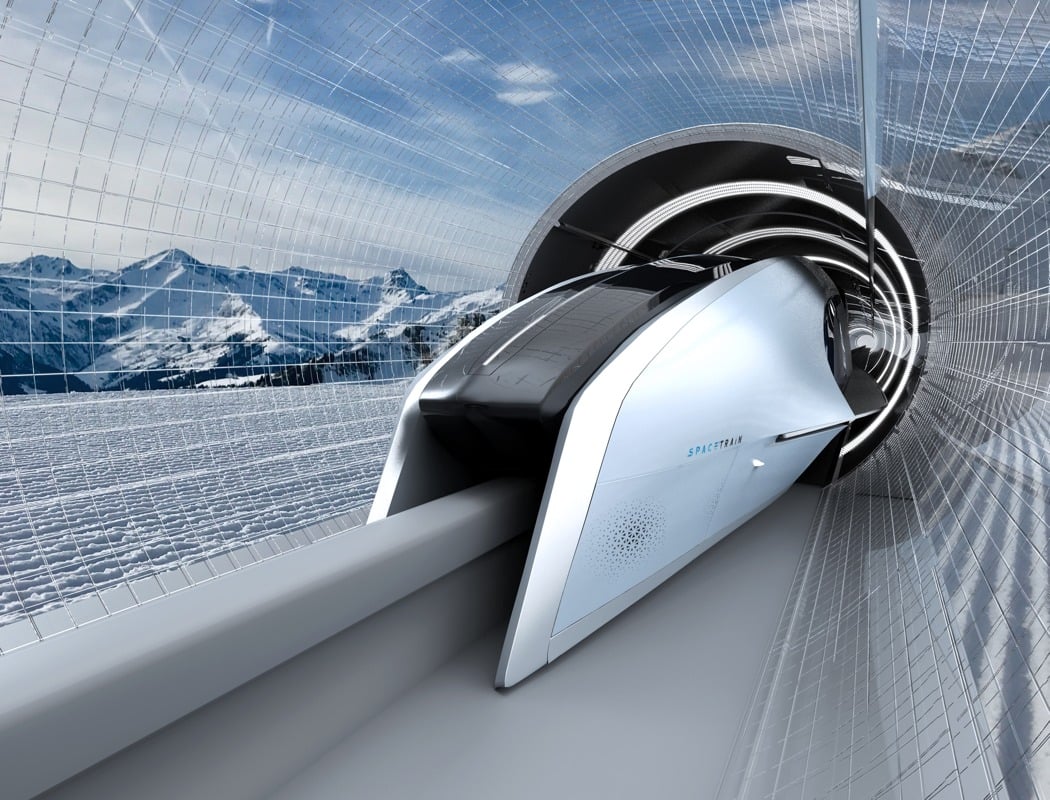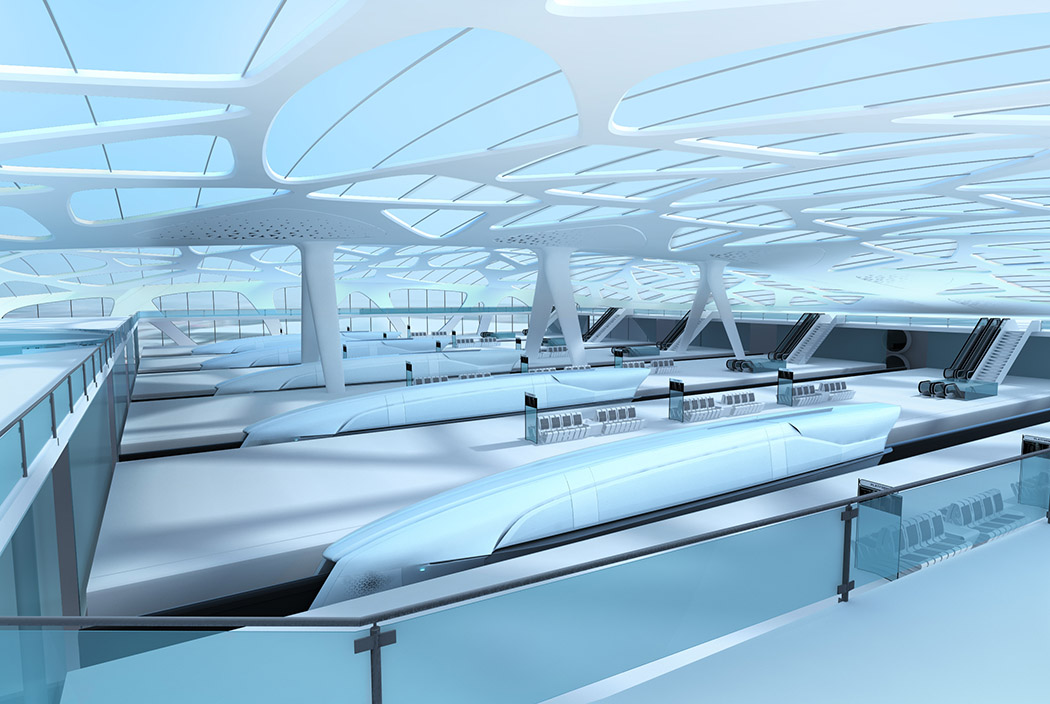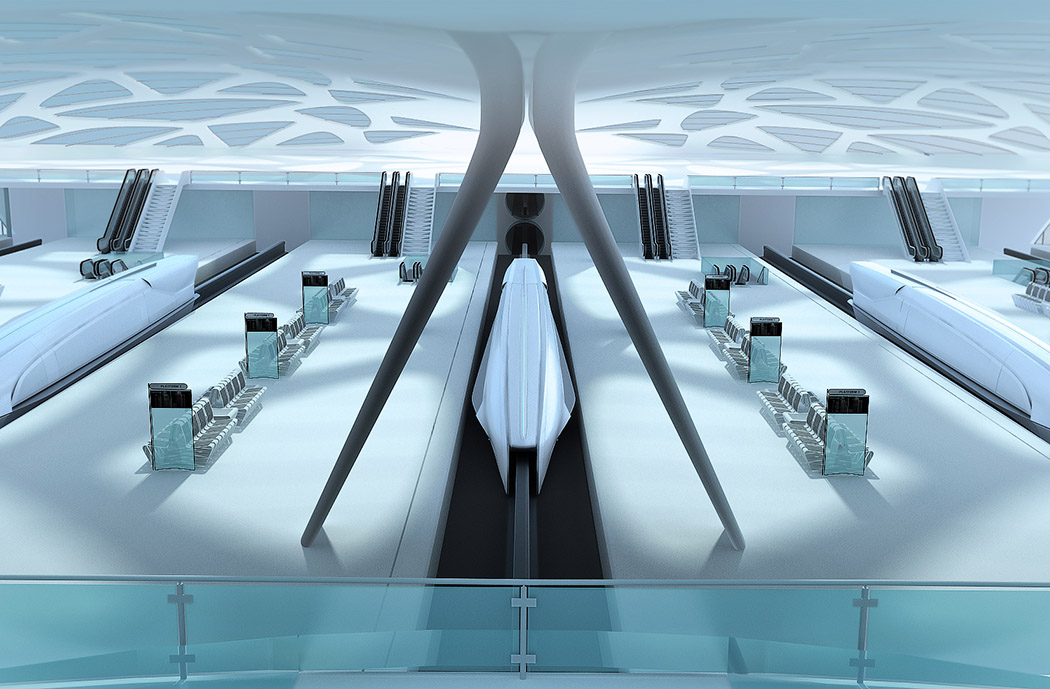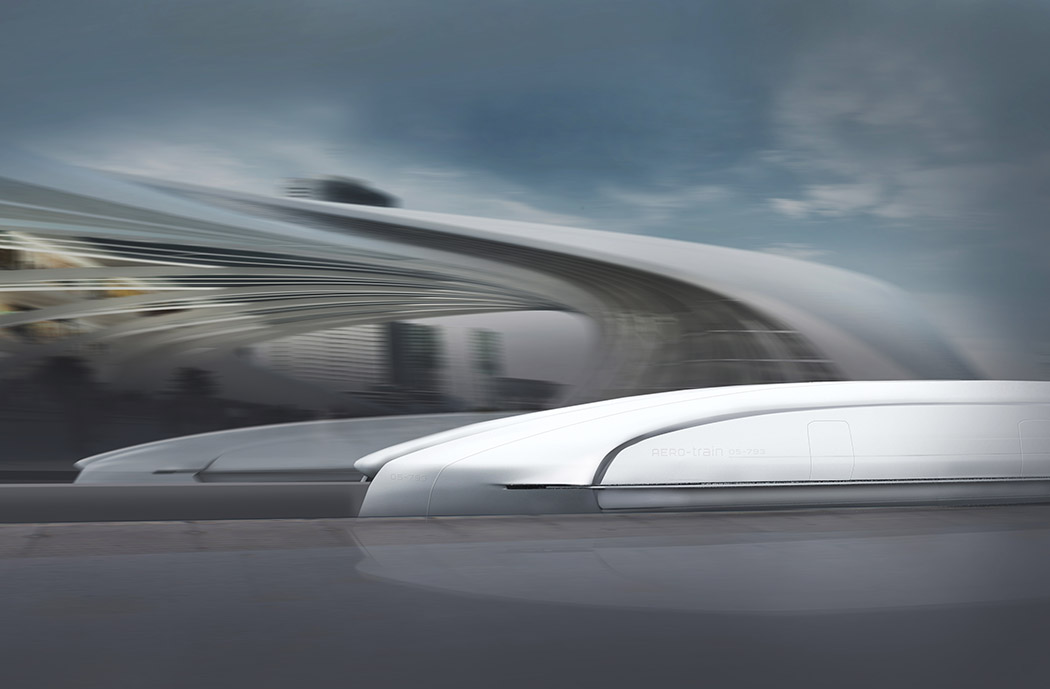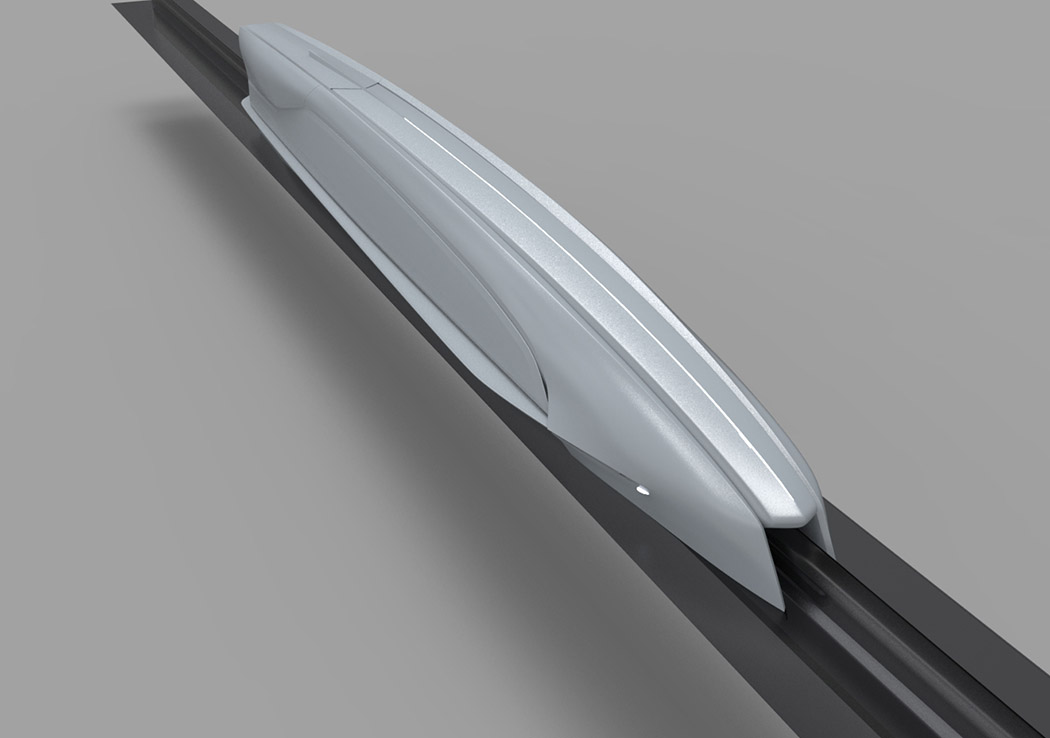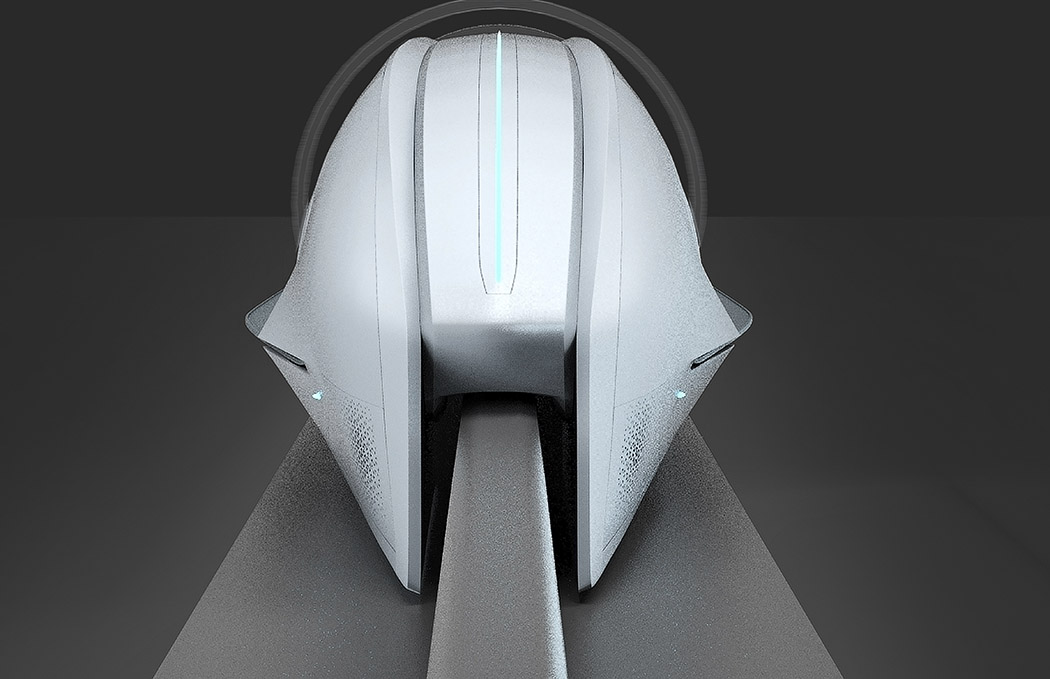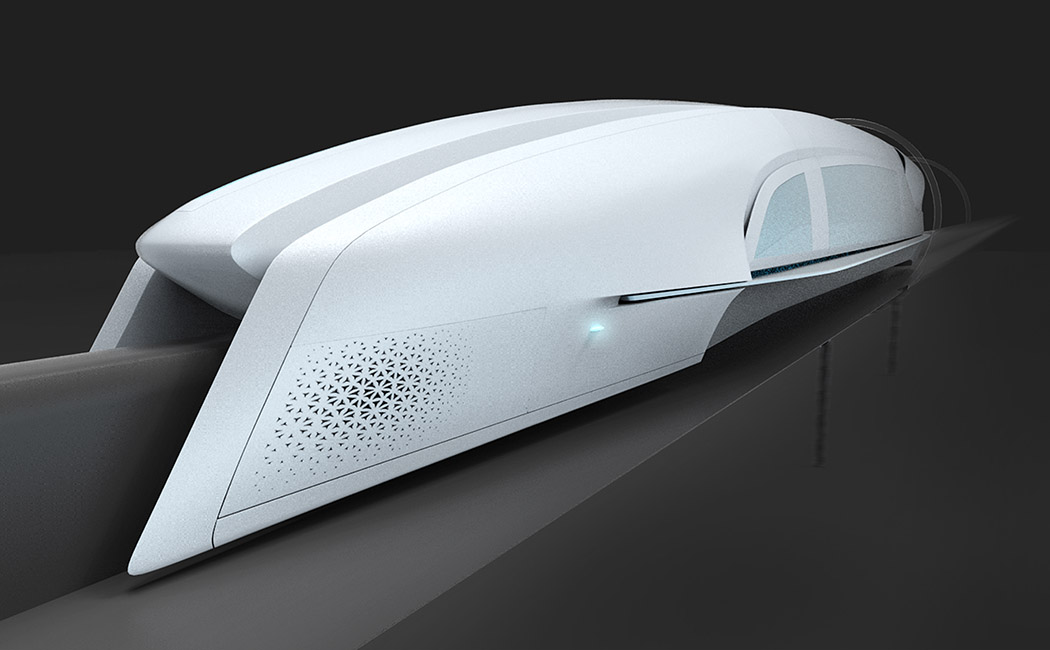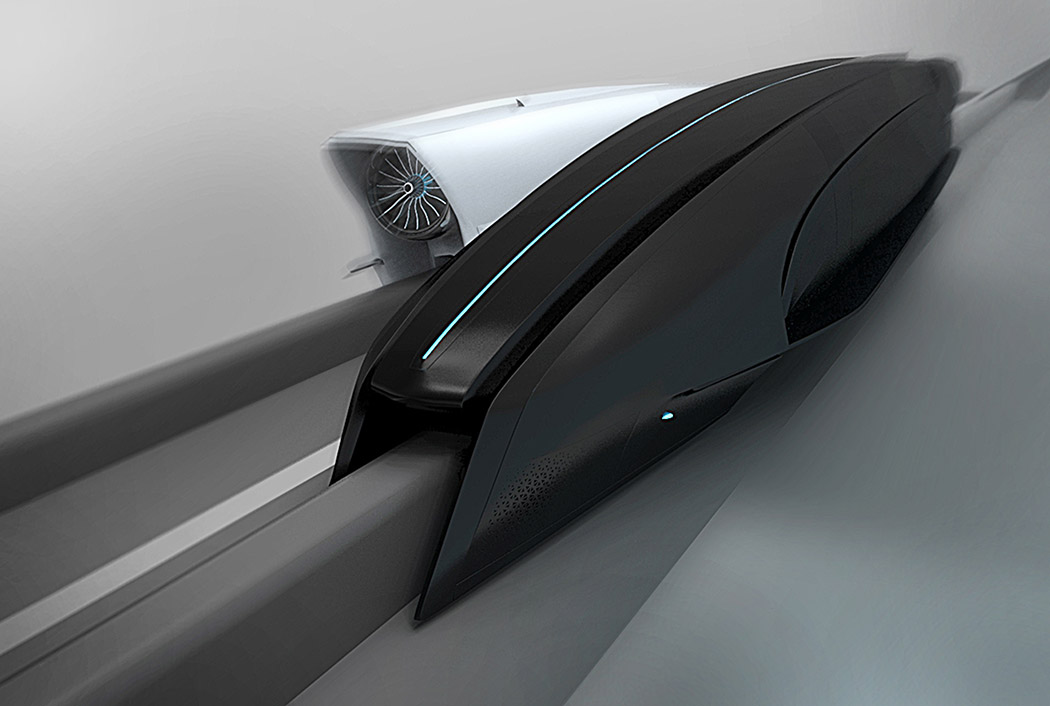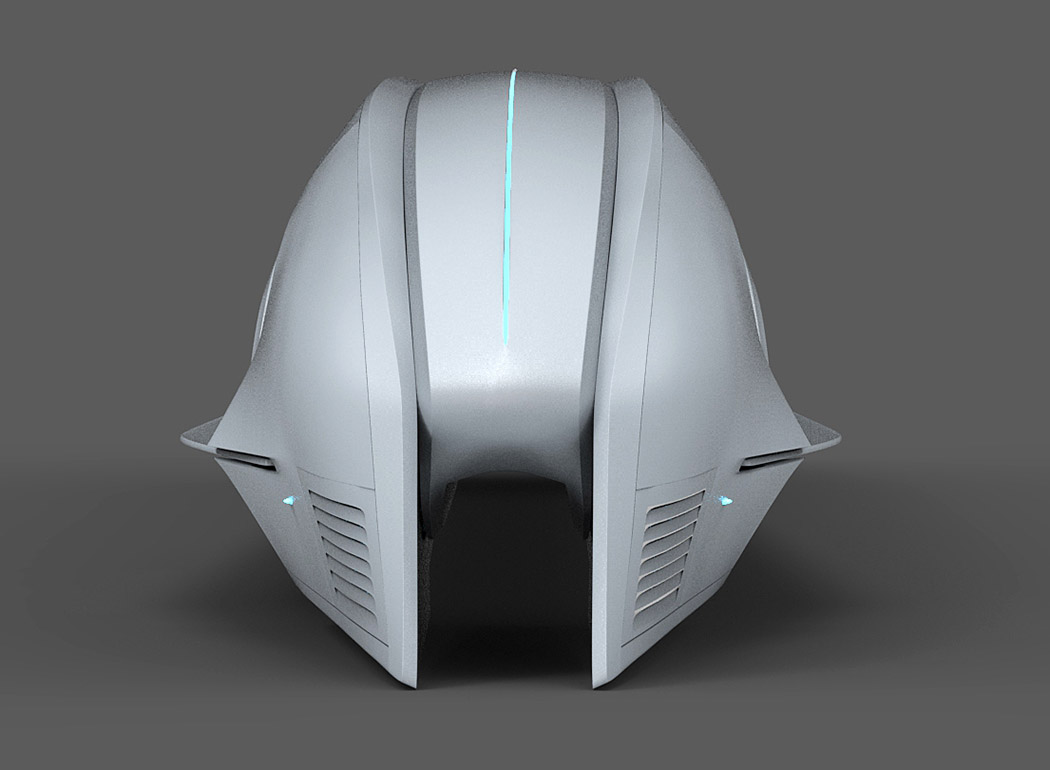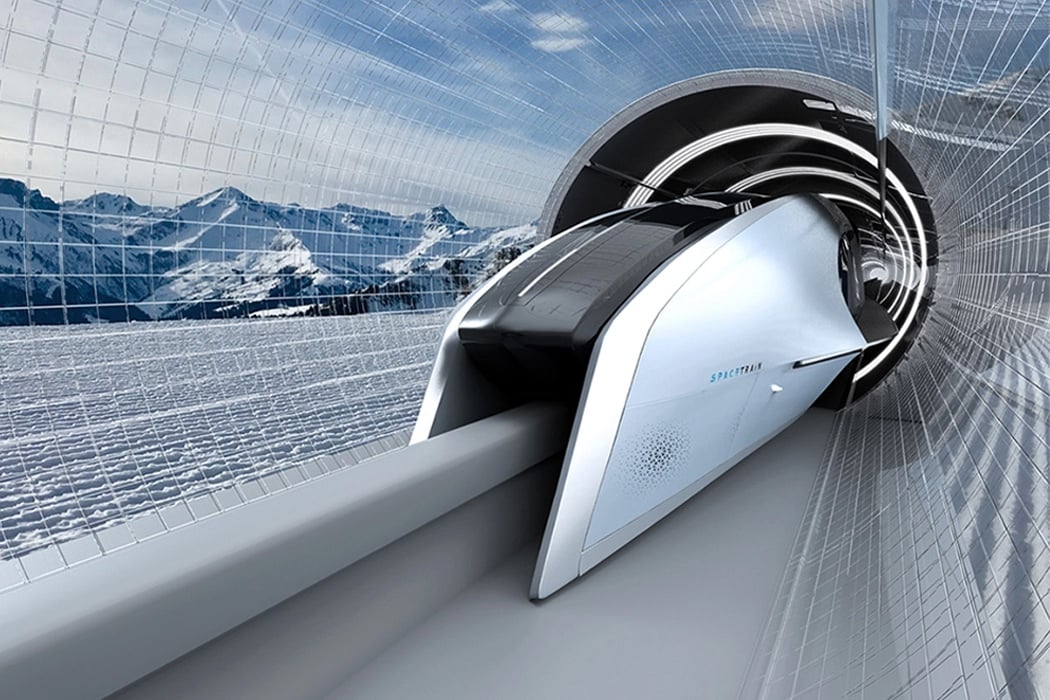
The future of public transportation is going to be dominated by less energy-consuming solutions – the likes of magnetic levitation that we already see on the Maglev trains in Japan, China, and South Korea. Drawing inspiration from the energy-efficient propelling technology, designer Darina Shi has designed her own version of the future of how we move from one place to the other.
She calls it “Spacetrain” which is inherently inspired by the magnificence of nature – its dynamics, fluidity, and intrinsic patterns. The basic skeleton of the concept train takes the shape of a stingray – the front and side sections bear stark resemble the mouth and fins of the majestic sea creature. Similarly, the hues of cool white with bluish tint emulate the different forms of liquid – ice and flowing water. To reduce drag and improve aerodynamics, Spacetrain has a fluidic design – showing the roots of its origin with biomimicry. As proposed by Darina, Spacetrain will be 25 meters in length and 3.4 meters wide. The transportation module moves inside a Hyperloop-like tunnel to reduce wind drag for maximum speed and efficiency. The passengers will get panoramic views as they sit inside the two-seater rows (each having individual infotainment systems) on either side of the module that has full view windows on the ceiling.
The passengers complete their journey to alight the train at the respective stations which are equally awe-inspiring to match the mode of transport. They have a minimalist architecture honed by the matching cool blue and white colors of the train itself. Waiting sections of the stations have a good mix of ecology and modern elements. For the safety of the passengers, the track is protected by fencing to prevent accidental falls and only falls back when the train is stationary. Above the main platform for boarding trains, there is a lounge section for dining and relaxing. Truly, the concept is intriguing and gives a sneak-peak into the aspired future for smart cities and the way we’ll commute in daily life.
Designer: Darina Shi
